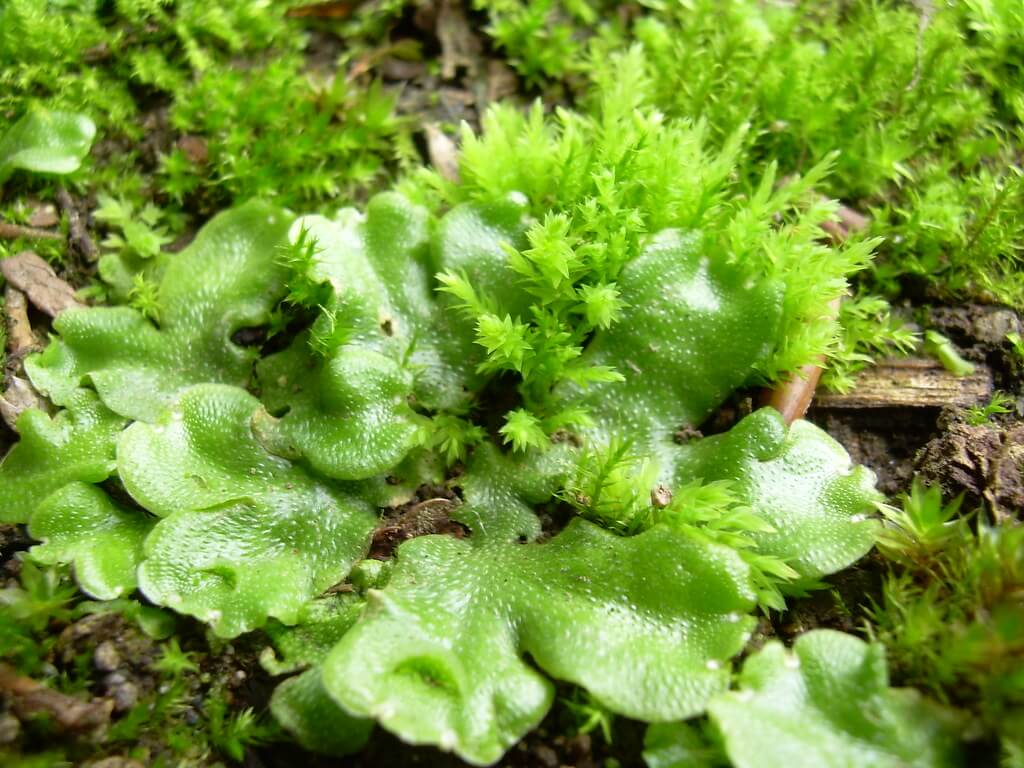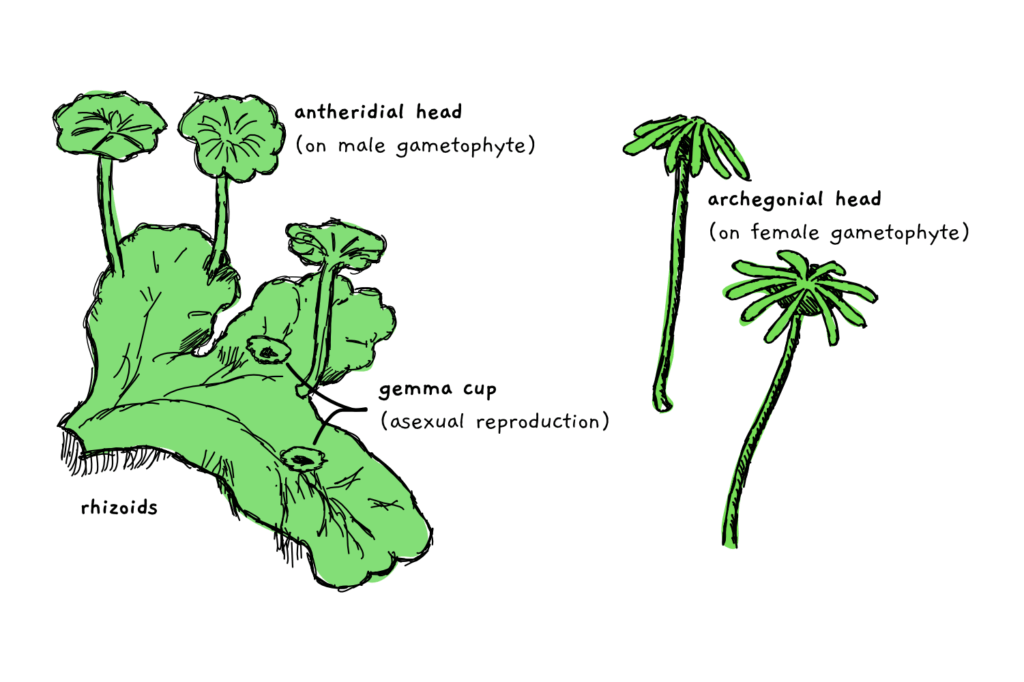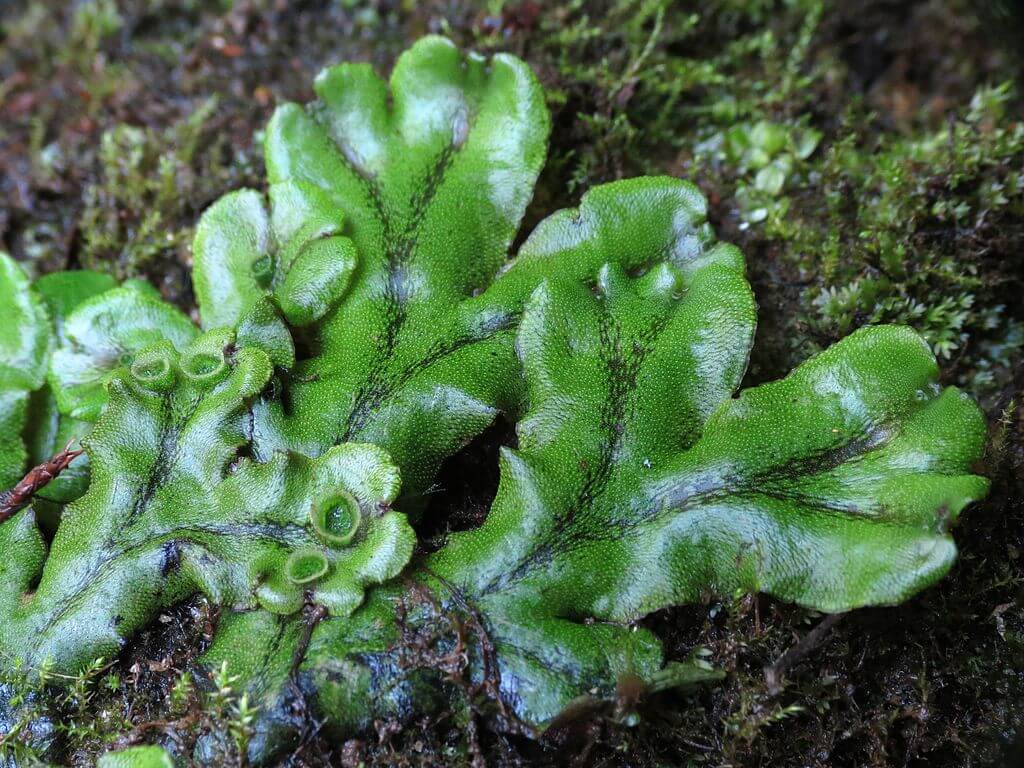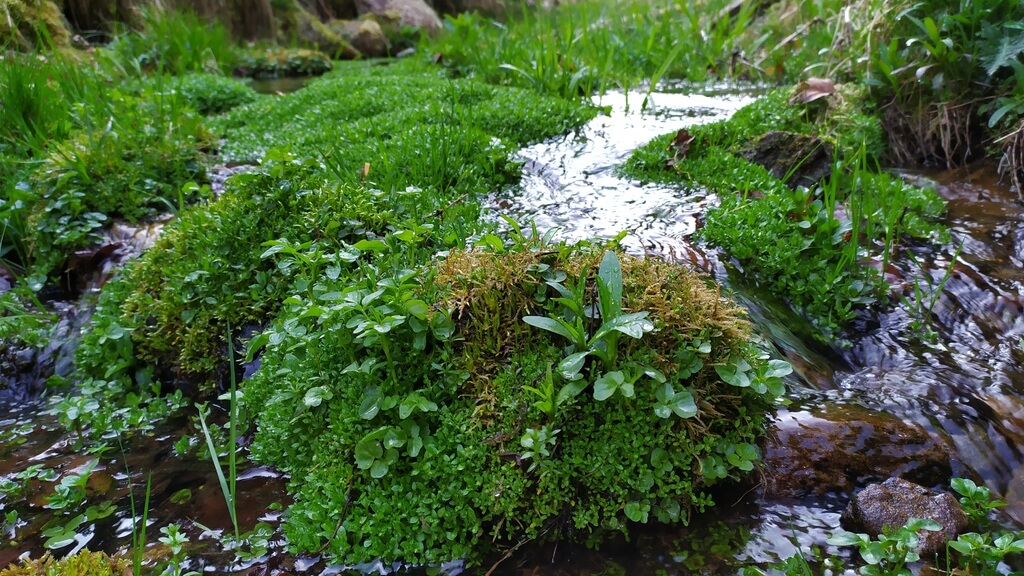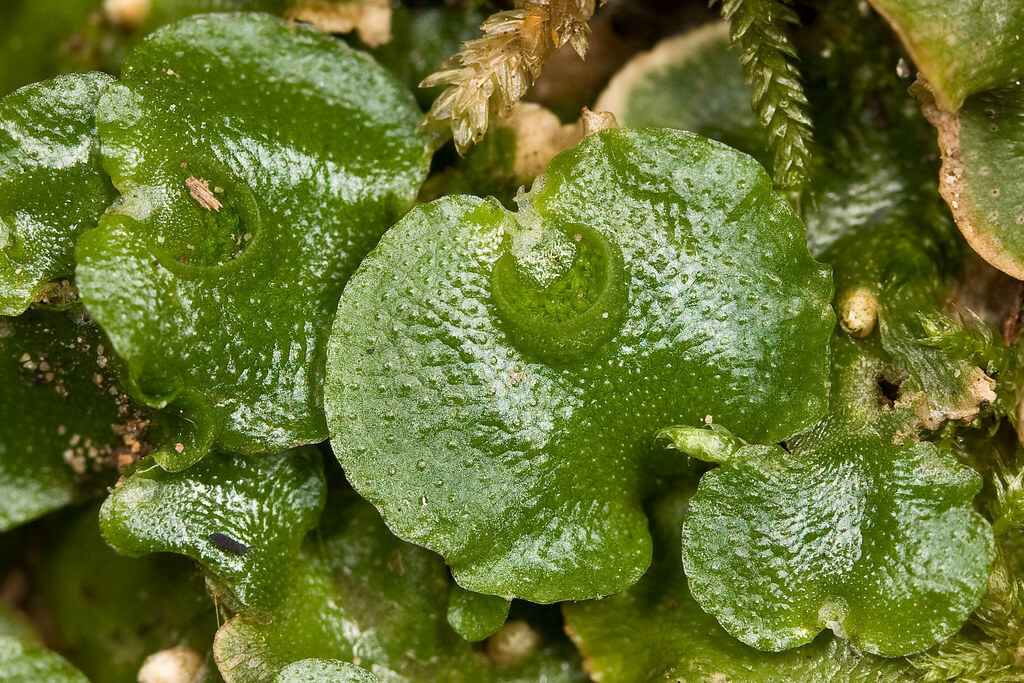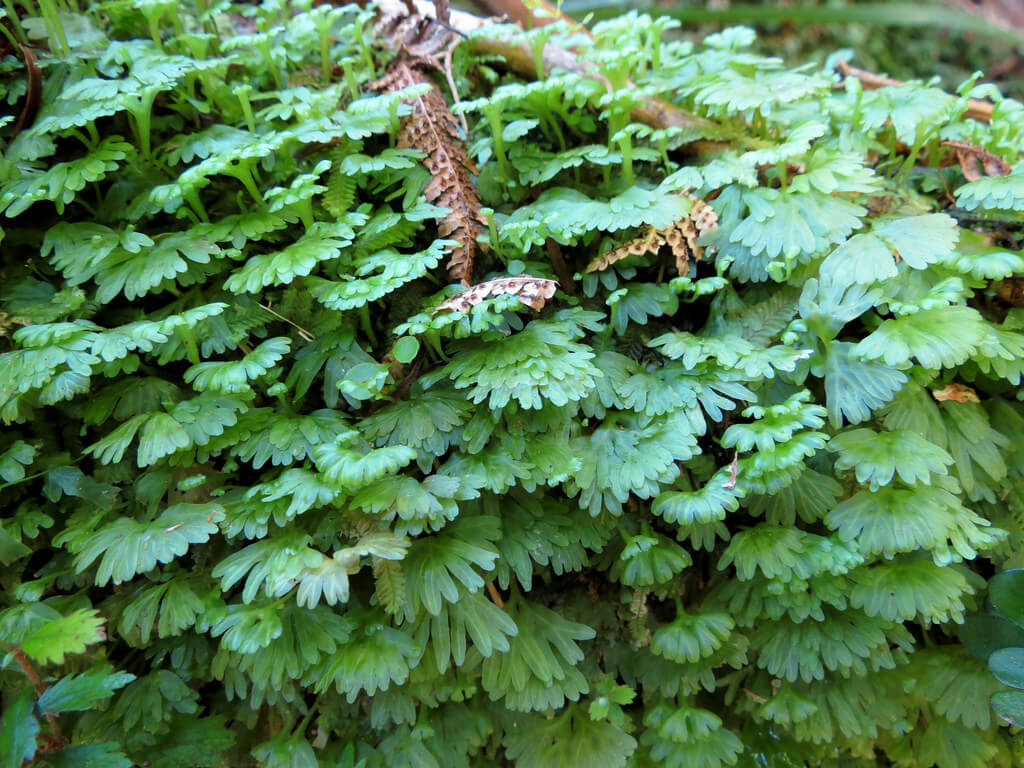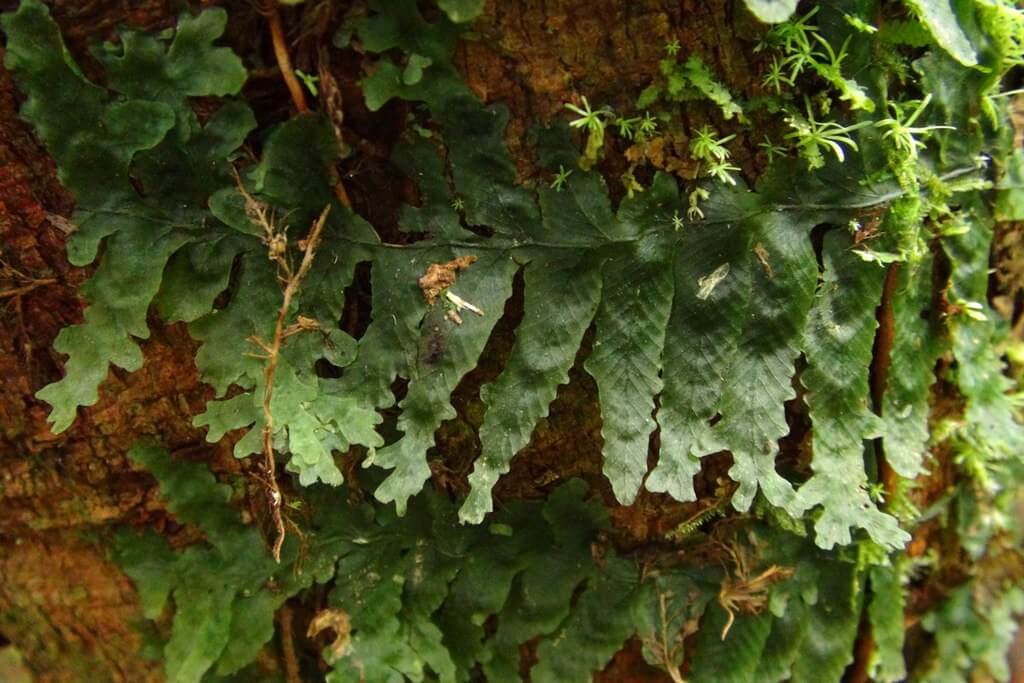Liverwort plant doesn’t need flowers to grow and therefore doesn't bear seeds. It’s one of nature's fascinating little secrets. Sounds interesting? Despite its humble appearance, this plant has a rich history and plays a vital role in various ecosystems.
Whether you're a plant lover or just curious about the weird and wonderful world of botany, liverworts are definitely worth a closer look.
Let’s dive into what makes these plants unique, how to care for them, and some cool facts you probably didn’t know!
- Scientific Name: Varies by species.
- Sporophyte: Short-lived, dependent on gametophyte, consists of foot, seta, and capsule.
- Class: Hepaticae.
- Family: Various, including Marchantiaceae, Metzgeriaceae, etc.
- Antheridia: Male reproductive organs.
- Archegonia: Female reproductive organs
- Species: Over 9,000 species.
Liverwort Plant Description
Liverworts, scientifically known as Marchantiophyta, are among Earth's oldest plants. These non-vascular plants, lacking xylem and phloem, absorb water and nutrients directly through their tissues. Thriving in damp, shady spots, they might seem simple but have a rich biological history.
Liverworts, scientifically known as Marchantiophyta, are among the most ancient groups of plants on Earth. These non-vascular plants lack the typical transport systems found in most plants, like xylem and phloem, which means they absorb water and nutrients directly through their tissues.
You’ll find them growing well in damp, shady environments, often overlooked due to their small size and simple appearance. But don’t let their modest looks fool you—liverworts are a fascinating group with a rich biological history.
The class Marchantiopsida includes two subclasses: Marchantiidae (thalloid liverworts with flat, ribbon-like structures) and Jungermanniidae (leafy liverworts resembling mosses). Each subclass has diverse families and genera.
Discover the hidden world of bryophytes with Dr. Pina Milne in this quick dive hosted by Gardening Australia. Learn why these tiny plants, like liverworts and mosses, are more fascinating than you might think. Watch below!
Reproduction Life Cycle: Sporophyte Role, Antheridia, Archegonia
Liverworts have a two-stage reproduction cycle: the gametophyte, the dominant photosynthetic stage, and the sporophyte, a small stalk that releases spores for reproduction. These spores spread via wind or water, enabling colonization of new areas.
They reproduce sexually with specialized organs: antheridia (male) and archegonia (female). Sperm from the antheridia swim to the archegonia for fertilization, leading to sporophyte development.
Liverwort Species
With over 9,000 species, liverworts show diverse forms and adaptations. Some, like Riccia, float on water, while others, such as Frullania, grow on tree bark. This variety highlights their adaptability and diversity.
Liverwort Plant Care
If you’re thinking about cultivating liverworts, you’re in for a treat. These plants may be ancient, but they’re relatively low-maintenance and can be a unique addition to your garden or terrarium. The key to liverwort plant care is mimicking their natural environment—think damp, shady, and cool.
Light and Temperature
Liverworts prefer low to moderate light, similar to what they would experience under a forest canopy. Direct sunlight can be too harsh and may cause them to dry out or scorch. Aim for filtered light or a shaded spot in your garden.
Temperature-wise, liverworts thrive in cool to moderate conditions, typically between 50°F to 70°F (10°C to 21°C). They can tolerate slightly warmer temperatures if the humidity is high, but they struggle in hot, dry conditions.
Watering and Humidity
Water is crucial for liverworts. Since they lack a vascular system, they rely on external moisture to survive. Keep the soil or substrate consistently moist, but not waterlogged. Liverworts also benefit from high humidity, so consider misting them regularly or placing them in a terrarium where humidity levels are naturally higher.
Soil and Substrate
Liverworts aren’t too picky about soil, but they do best in substrates that retain moisture. A mix of peat moss and perlite or sand can work well, providing both drainage and moisture retention.
If you’re growing liverworts in a terrarium, you can use a layer of sphagnum moss as a base, which helps maintain humidity and provides a natural environment for the plants.
Fertilization and Maintenance
Liverworts don’t require much in the way of fertilization. In fact, too much fertilizer can harm these delicate plants. If you feel the need to feed them, use a very diluted, balanced fertilizer sparingly, perhaps once a month during the growing season.
As for maintenance, keep an eye on the liverworts for any signs of drying out or pests. Regularly misting and removing any dead or decaying material will keep your liverworts healthy and vibrant.
Here's a quick reference:
- Moisture: Requires constant moisture.
- Light: Prefers shaded environments.
- Temperature: Thrives in cool, stable temperatures.
- Substrate: Grows well on moist soil, rocks, or wood.
Liverwort Plant Uses
Liverworts may not be as widely known as some other plants, but they have been used by humans for centuries, both medicinally and in traditional practices. Despite their small size, these plants pack a punch in terms of utility, particularly in natural remedies and environmental contributions.
Medicinal Uses
Historically, liverworts were believed to have healing properties, particularly for liver ailments, which is how they got their name.
In medieval times, the "Doctrine of Signatures" suggested that plants resembling body parts could be used to treat ailments of those parts. Because liverworts have a lobed, liver-like appearance, they were often used in herbal medicine to treat liver conditions.
In modern times, some species of liverworts are still used in traditional medicine, particularly in Asia. For instance, extracts from certain liverwort species are believed to have antimicrobial and anti-inflammatory properties.
However, it's important to note that while there’s ongoing research into the potential medicinal uses of liverworts, most applications are based on traditional knowledge rather than scientific validation.
Ecological Importance
Beyond their potential medicinal uses, liverworts play a significant role in their ecosystems. They are pioneers in harsh environments, often among the first plants to colonize bare soil or rock. By breaking down these substrates, liverworts help create conditions that allow other plants to establish and thrive.
Liverworts also contribute to soil formation and stabilization. Their root-like structures, called rhizoids, help bind soil particles together, reducing erosion. In addition, liverworts provide habitat for various microorganisms and small invertebrates, contributing to biodiversity in their ecosystems.
Aesthetic and Educational Uses
For those interested in botany or natural history, liverworts can be an excellent subject of study. Their simple structure and fascinating life cycle make them a great teaching tool for understanding plant biology, particularly the concepts of alternation of generations and non-vascular plant reproduction.
Liverworts also have an aesthetic appeal, particularly in terrariums or as ground cover in shaded gardens. Their delicate, moss-like appearance adds a lush, green element to indoor plant displays. They can be used to create miniature landscapes that mimic forest floors or wetland environments, providing a naturalistic touch to garden design.
Livelihood Uses
In some parts of the world, liverworts are harvested and used in various traditional practices. For example, in Japan, certain liverwort species are used in the creation of miniature gardens known as bonkei. These small-scale landscapes are designed to reflect natural scenes and often include liverworts as a representation of mosses or other ground cover plants.
While liverworts are not typically cultivated on a large scale, their ability to thrive in low-light, high-humidity environments makes them a potential candidate for indoor horticulture. They can be propagated relatively easily, and their low-maintenance requirements make them an attractive option for plant enthusiasts looking to expand their collection.
Quick reference for liverwort plant uses:
- Traditional Medicine: Used for liver ailments, skin conditions.
- Gardening: Grown in terrariums, as ground cover.
- Environmental Indicators: Bioindicators of air quality and ecosystem health.
Liverwort Plant Type
Liverworts are categorized into different types based on their structure and habitat. Understanding these types can help you identify liverworts in the wild or decide which type might be suitable for cultivation in your garden or terrarium.
Thalloid Liverworts
Thalloid liverworts, as mentioned earlier, have a flat, ribbon-like body that spreads across the surface on which they grow.
These liverworts often have a somewhat shiny appearance and can be found in a variety of habitats, including moist rocks, soil, and even as epiphytes on trees. Some well-known examples of thalloid liverworts include Marchantia and Riccia.
Leafy Liverworts
Leafy liverworts resemble mosses, with a stem-like structure covered in small, leaf-like appendages. These liverworts are more common in humid, shaded environments and are often found on forest floors or growing on tree trunks. Frullania and Plagiochila are examples of leafy liverworts that are widely distributed across different regions.
Aquatic Liverworts
While most liverworts prefer moist terrestrial environments, some species are adapted to aquatic habitats. Aquatic liverworts can be found in freshwater environments, such as ponds, streams, and wetlands.
These liverworts often form dense mats that float on the water's surface or grow submerged. Riccia fluitans is a popular aquatic liverwort often used in aquariums for its aesthetic appeal and ability to provide habitat for aquatic life.
Epiphytic Liverworts
Epiphytic liverworts grow on the surface of other plants, particularly trees, without parasitizing them. These liverworts are commonly found in tropical rainforests, where the high humidity and stable temperatures provide ideal conditions for their growth.
Epiphytic liverworts play a crucial role in the rainforest ecosystem, contributing to nutrient cycling and providing habitat for a range of other organisms.
Quick reference for liverwort plant type:
- Thalloid: Flat, ribbon-like body.
- Leafy: Moss-like structure.
- Aquatic: Found in freshwater habitats.
- Epiphytic: Grows on other plants, especially in rainforests.
Liverwort Plant Body
The liverwort plant body is a fascinating structure that differs significantly from the more familiar vascular plants like ferns or flowering plants. Understanding the liverwort's body structure gives us insights into how these ancient plants have adapted to their environments and maintained their place in ecosystems for millions of years.
Thalloid vs. Leafy Liverworts
Liverworts primarily exist in two forms: thalloid and leafy. Thalloid liverworts have a flat, ribbon-like body called a thallus. This thallus is typically one to a few cells thick and spreads out over the substrate, absorbing water and nutrients directly through its surface.
The thallus often has a simple or branched structure and may feature specialized structures for reproduction, such as gemma cups or sporophytes.
Leafy liverworts, on the other hand, resemble mosses due to their more complex body structure. They have a stem-like axis with small, leaf-like appendages arranged in rows.
These "leaves" are typically just one cell thick and lack the cuticle found in many vascular plants, making them highly reliant on their surrounding environment for moisture. Leafy liverworts are generally more common in humid, tropical environments, where their delicate structures are less likely to dry out.
Rhizoids: The Anchors
One of the key features of the liverwort plant body is the presence of rhizoids. Rhizoids are hair-like structures that anchor the liverwort to its substrate, whether it be soil, rocks, or tree bark. Unlike true roots, rhizoids do not absorb nutrients; their primary function is to secure the plant in place.
In some liverworts, rhizoids also help in the absorption of water and minerals, but they lack the complexity of roots found in vascular plants.
The Liverwort Gametophyte
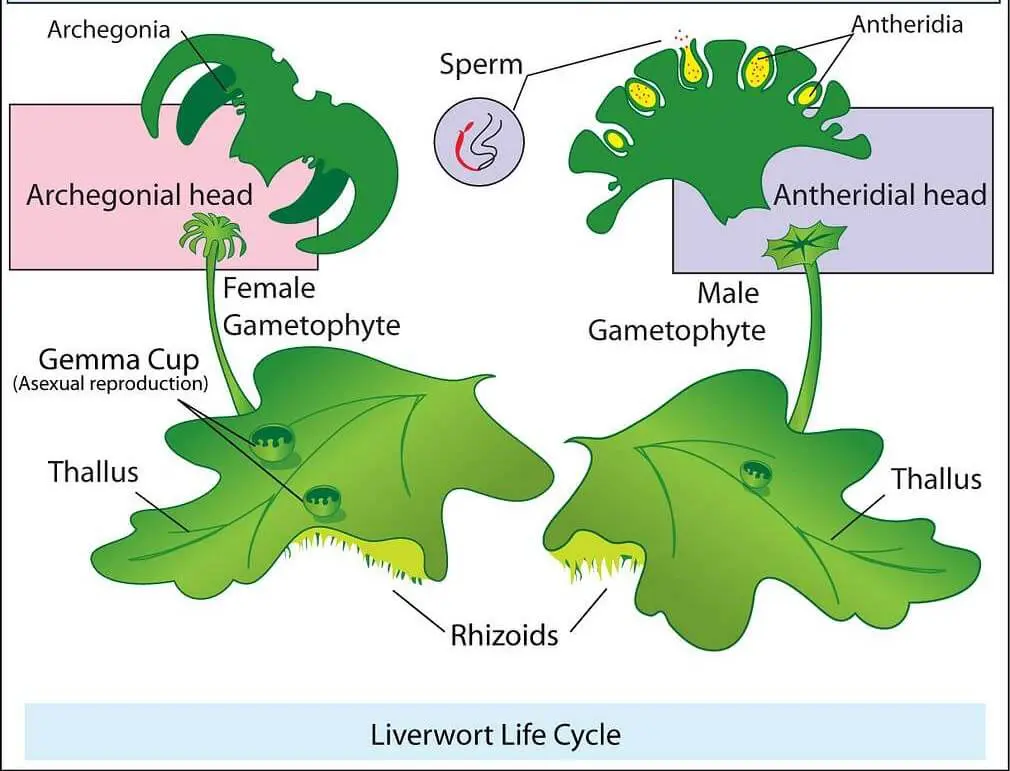
The gametophyte is the dominant stage of the liverwort lifecycle, making up the majority of the visible plant body.
This phase is haploid, meaning it contains a single set of chromosomes, unlike the diploid sporophyte stage. The gametophyte carries out photosynthesis, provides support for the sporophyte, and is responsible for sexual reproduction.
In many liverworts, the gametophyte body includes specialized structures for reproduction. For example, in thalloid liverworts like Marchantia, the gametophyte produces archegoniophores and antheridiophores—umbrella-like structures that house the reproductive organs, archegonia (female) and antheridia (male).
These structures elevate the reproductive organs above the main body of the plant, which helps in the distribution of sperm and the fertilization process.
The Liverwort Sporophyte

Although the sporophyte is less prominent than the gametophyte, it plays a crucial role in the liverwort's lifecycle. After fertilization occurs within the archegonium, the zygote develops into the sporophyte, which remains attached to and dependent on the gametophyte for its entire life.
The sporophyte consists of a foot, a seta (stalk), and a spore-producing capsule. Once mature, the capsule releases spores into the environment, which can grow into new gametophytes under the right conditions.
The liverwort sporophyte is unique in that it doesn’t perform photosynthesis and relies entirely on the gametophyte for nutrition. This close relationship between the two stages of the liverwort lifecycle underscores the simplicity and efficiency of these ancient plants.
Here's a quick reference to liverwort plant body:
- Thalloid: Flat, ribbon-like body.
- Leafy: Stem-like structure with leaf-like appendages.
- Rhizoids: Hair-like structures anchoring the plant.
- Gametophyte: Dominant phase, performs photosynthesis.
- Sporophyte: Dependent, produces spores.
Liverwort Plant Seeds
Liverworts don’t produce seeds, which is one of the key differences between them and many other types of plants. Instead, they reproduce via spores, which are produced by the sporophyte generation. These spores are incredibly small and are dispersed by wind, water, or even animals.
Spore Dispersal Mechanisms
The spores of liverworts are often released from capsule-like structures that burst open when they mature. In some species, these capsules have specialized mechanisms to help with spore dispersal.
For example, in the genus Marchantia, the sporophyte contains structures known as elaters, which are spring-like cells that help propel the spores into the air when the capsule opens.
This method of spore dispersal ensures that the spores can travel some distance from the parent plant, increasing the likelihood of colonizing new areas.
Asexual Reproduction with Gemmae
In addition to spores, liverworts can also reproduce asexually using gemmae. These are small, multicellular bodies that are produced in specialized structures called gemma cups, found on the surface of the liverwort gametophyte.
When raindrops hit these gemma cups, the gemmae are splashed out and can land in new locations, where they will grow into new plants. This form of reproduction allows liverworts to rapidly expand their presence in favorable environments.
Liverwort Plant Facts
Liverworts are more than just humble plants growing in damp places; they have a unique place in the plant kingdom and offer some fascinating facts worth knowing.
- Ancient Origins: Over 400 million years old.
- Simple Structure: Non-vascular, dependent on moisture.
- Reproduction: Sexual and asexual.
- Ecological Importance: Soil formation, habitat provision.
- Sensitive Indicators: Bioindicators for environmental health.
Let’s look at some of the most interesting things about liverworts in detail:
Ancient Origins
Liverworts are among the oldest land plants, with a fossil record dating back over 400 million years. This makes them some of the earliest colonizers of terrestrial environments, playing a significant role in the evolution of Earth's landscapes.
Simplicity in Structure
Liverworts are non-vascular plants, meaning they lack the complex transport systems found in higher plants. Despite this simplicity, they have adapted to a wide range of environments, from tropical rainforests to arctic tundra.
Their reliance on external moisture for survival ties them closely to their environment, making them excellent indicators of ecosystem health.
Diverse Reproductive Strategies of Liverwort Plant
Liverworts reproduce both sexually and asexually, showcasing a variety of strategies for survival and propagation. Their ability to produce spores and gemmae allows them to spread quickly in favorable conditions and maintain populations even in less-than-ideal environments.
Ecological Importance of Liverwort
Liverworts contribute to soil formation, stabilize substrates, and provide habitat for a range of microorganisms and small invertebrates. They are also involved in nutrient cycling within ecosystems, helping to break down organic material and release nutrients back into the soil.
Sensitive Indicators of Liverwort Plant
Because liverworts are so sensitive to environmental changes, they are often used as bioindicators. Scientists study liverworts to monitor air quality, assess the health of ecosystems, and understand the impacts of climate change. Their presence or absence can provide critical clues about the state of their surrounding environment.
How Are Liverworts and Hornworts Different?
The chart below provides a clear and concise comparison of the key differences between liverworts and hornworts.
Aspect | Liverworts | Hornworts |
Structure | Can be thalloid (flat, ribbon-like) or leafy (moss-like). | Thalloid, usually flat and rosette-like; no leafy form. |
Sporophyte | Short-lived, with a foot, seta (stalk), and capsule. | Long-lasting, horn-shaped, grows continuously from the gametophyte. |
Reproductive Structures | Specialized organs (antheridia and archegonia) on elevated structures. | Reproductive organs are embedded and scattered across the thallus. |
Chloroplasts | Multiple chloroplasts per cell. | Usually one large chloroplast per cell; often has symbiotic cyanobacteria. |
Ecological Niches | Diverse habitats including forest floors, rocks, and epiphytes. | Typically found in damp, nutrient-poor soils, often waterlogged. |
Where Does Liverwort Grow?
- Moist and Shaded Environments:
Liverworts are commonly found in moist, shaded areas like forest floors and stream banks, where they absorb ample water. - Tropical Rainforests:
In tropical rainforests, liverworts grow on the ground, tree trunks, and even high in the canopy, benefiting from high humidity and constant moisture. - Alpine and Arctic Regions:
Liverworts also thrive in extreme conditions like alpine and arctic regions, growing in sheltered spots and surviving freezing and desiccation. - Urban and Disturbed Areas:
They colonize urban areas and disturbed lands, such as damp walls and compacted soil, playing a role in ecological succession. - Aquatic Habitats:
Aquatic liverworts are found in ponds and streams, forming mats on water surfaces or growing submerged, contributing to nutrient cycling and providing habitat.
FAQs
Should I get rid of liverwort?
Liverworts can be a sign of high moisture in your garden, but they’re not harmful to plants. If they bother you aesthetically or compete with other plants, you can remove them manually or adjust the moisture levels.
What is liverwort plant good for?
Liverworts are beneficial in traditional medicine for treating liver ailments and skin conditions. They also play a vital role in ecosystems by stabilizing soil and providing habitat for small organisms.
Is liverwort a problem?
Liverworts are generally not a problem unless they become too invasive in garden settings. They thrive in moist conditions, so controlling moisture levels can help manage their growth.
Is liverwort harmful to plants?
Liverworts are not directly harmful to plants, but they can compete for space and resources if they become too abundant. Keeping them in check ensures they don’t overcrowd other garden plants.
Final Thoughts
The liverwort plant is a fascinating and ancient species that plays a crucial role in various ecosystems. Whether you’re a gardening enthusiast, a student of botany, or simply curious about unique plants, liverworts offer a rich tapestry of biological and ecological insights.
While they may sometimes be considered a nuisance in garden settings, their ecological importance and historical medicinal uses highlight their value.
Understanding how to care for liverworts, their potential uses, and how they differ from similar plants like hornworts can deepen your appreciation for these resilient organisms.
Whether you’re looking to cultivate them or manage their presence in your garden, a bit of knowledge goes a long way in ensuring they thrive—or stay in check—according to your needs.
If you’ve had experience with liverwort plants or have tips to share, feel free to drop them in the comments below. Your insights could help others better understand and appreciate these unique plants!
External Link:
For more detailed information on Liverwort plant, the Missouri Department of Conservation has some great resources. Check out the Michigan State University for advanced propagation techniques and more care tips.
Happy gardening!

